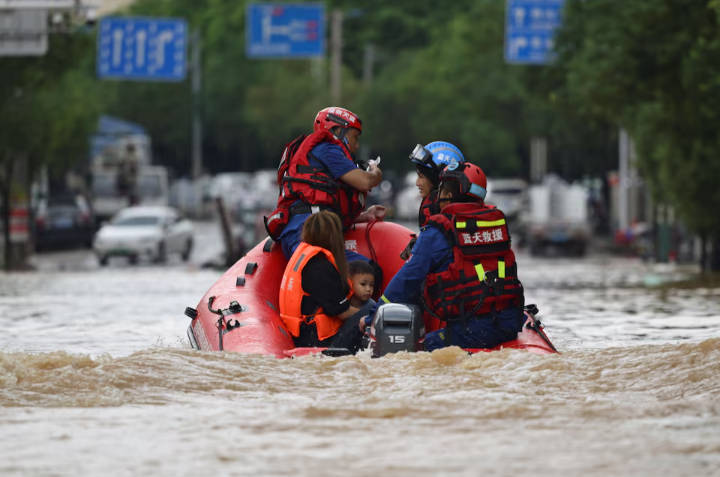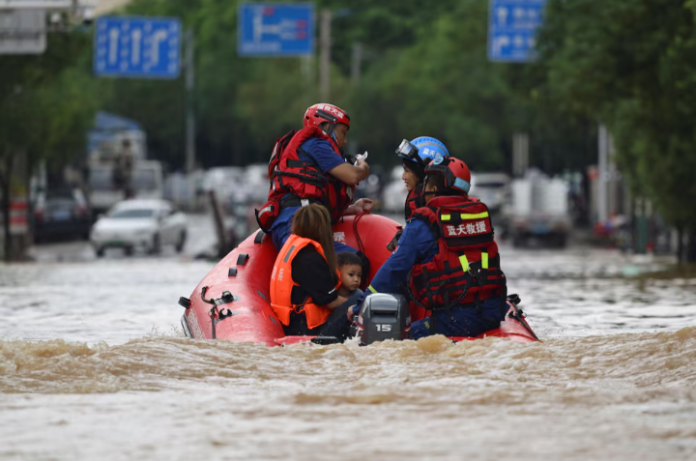China is sounding the alarm as historic floods triggered by relentless rainfall sweep across the country, threatening lives, agriculture, and infrastructure in one of the world’s biggest economies.
On Friday, Chinese authorities raised red flood alerts—the highest level—for the first time in 2025. The warnings covered several central and southern provinces including Anhui, Henan, Hubei, Hunan, Guizhou, and the Guangxi region, according to state news agency Xinhua. These areas are now under close watch as the East Asia monsoon season intensifies.
Meteorologists blame the extreme downpours and flash floods on climate change, warning that the situation is worsening year after year. China’s flood defences—many of which are decades old—are being pushed to their limits, with weather disasters increasingly disrupting homes, food production, and national infrastructure.
Heavy rain in southern Hunan this week caused the Lishui River to surge more than two meters above safe levels, triggering the largest flood the area has seen since 1998. Videos posted on Douyin (China’s version of TikTok) show the river overflowing onto streets, dragging debris and vehicles downstream.
In Chongqing, a hilly city in the southwest, apartment buildings were left submerged, cars were swept away, and floodwaters reached the height of power lines. The local government evacuated nearly 300 residents from mountain communities after a staggering 304 mm (12 inches) of rain fell in a single day. In some areas, rivers rose by as much as 19 meters due to runoff from the surrounding mountains, state broadcaster CCTV reported.
Meanwhile, in Guangdong’s Zhaoqing city, floodwaters broke historical records, rising over five meters above warning levels and disrupting power supplies to thousands of homes.

These extreme conditions are not new to China—but they are becoming more severe. Last July, floods and other natural disasters caused over $10 billion in damage. In 2020, economic losses tripled during one of the country’s longest rainy seasons in recent memory, which lasted over 60 days—nearly three weeks longer than usual.
And the danger doesn’t end with the rain. China’s monsoon season is typically followed by intense heatwaves. Any crops that survive the floods are often scorched by the sun, while reservoirs dry up and roads buckle under the heat. This dangerous one-two punch of flooding and drought is expected to take a major toll on the country’s $2.8 trillion agricultural industry.
With global warming continuing to fuel weather extremes, experts warn that China must act urgently to update its disaster response systems and infrastructure. For now, millions remain on edge, bracing for the next wave of storms that could arrive in the coming days.



